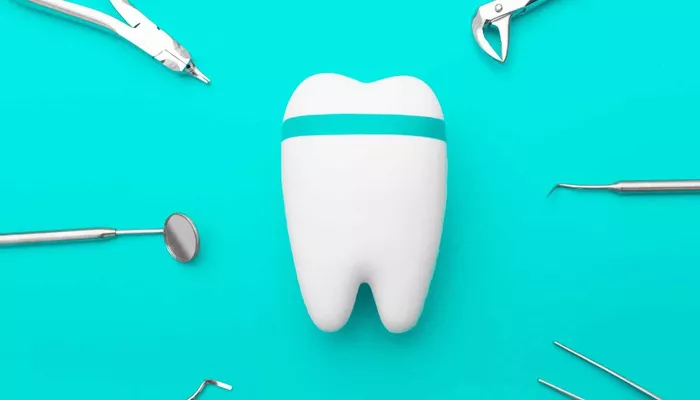Teeth fillings are a common dental procedure used to restore teeth damaged by decay, fractures, or wear. They help protect the tooth from further damage and restore its function. However, it is not unusual for fillings to fall out over time.
Understanding the reasons behind filling failure is important to maintain oral health and avoid complications such as swollen gums and gum disease.
Common Reasons Why Teeth Fillings Fall Out
Improper Bonding or Placement
One of the main reasons fillings fall out is due to poor adhesion between the filling material and the tooth surface. If the tooth was not properly cleaned or dried before the filling was applied, the bond may weaken. This can lead to the filling detaching under pressure from chewing or temperature changes.
Decay Under or Around the Filling
New decay can develop beneath or around an existing filling. If bacteria penetrate the margins, the tooth structure weakens, causing the filling to become loose or fall out. Untreated decay can also cause swollen gums and increase the risk of gum disease.
Wear and Tear from Chewing
Fillings undergo constant stress from biting and chewing. Over time, this stress can cause cracks or fractures in the filling material, especially with materials like composite resin or amalgam. Excessive grinding or clenching (bruxism) accelerates this process, increasing the chance of filling failure.
Large or Deep Cavities
If the cavity is very large or deep, the filling may not have enough tooth structure to hold onto. This weak retention can lead to the filling falling out sooner than expected. In some cases, a dental crown may be a better option for restoring the tooth.
Swollen Gums and Gum Disease Impact
Inflamed or swollen gums from gum disease can affect the stability of fillings near the gum line. Gum inflammation causes tissues to pull away from the tooth, exposing filling edges and weakening their support. Untreated gum disease can accelerate filling failure and lead to tooth loss.
Types of Filling Materials and Their Longevity
Amalgam Fillings
Amalgam, a silver-colored filling, is durable and lasts 10 to 15 years on average. However, it can expand and contract with temperature changes, sometimes causing cracks in the tooth or gaps around the filling that allow it to loosen.
Composite Resin Fillings
Composite resin fillings are tooth-colored and popular for aesthetic reasons. They bond chemically to the tooth but tend to wear down faster than amalgam. Their bond can weaken if exposed to moisture during placement or if subjected to heavy chewing forces.
Gold and Ceramic Fillings
Gold and ceramic fillings are strong and long-lasting but more expensive. They tend to maintain their integrity better but can still fall out if the tooth structure supporting them deteriorates.
How Poor Oral Hygiene Leads to Filling Failure
Plaque Buildup and Bacterial Growth
Poor oral hygiene causes plaque buildup around fillings and teeth. Plaque harbors bacteria that cause tooth decay and gum disease. This bacterial invasion weakens both the tooth and the filling bond, increasing the risk that fillings will fall out.
Development of Swollen Gums
Accumulated plaque irritates the gums, leading to swollen gums and gingivitis. This inflammation reduces the gum’s ability to protect the tooth and fillings. In severe cases, gum recession exposes filling margins, making them prone to detachment.
Gum Disease Progression
Untreated gum disease can destroy the supporting bone and tissues around teeth. This instability affects teeth with fillings, causing fillings to loosen or fall out, and may ultimately result in tooth loss.
The Role of Diet and Habits in Filling Durability
Acidic and Sugary Foods
Diets high in acids and sugars accelerate enamel erosion and increase decay risk around fillings. Acidic foods soften the filling margins and enamel, leading to gaps where fillings can become dislodged.
Bruxism (Teeth Grinding)
Grinding or clenching teeth exerts excessive pressure on fillings. This force can cause fractures in both the filling and surrounding tooth, making fillings more likely to fall out.
Chewing Hard Objects
Chewing on hard items such as ice, pens, or popcorn kernels can chip or crack fillings. These cracks reduce the filling’s effectiveness and may cause them to detach.
Preventing Teeth Filling Failure
Maintain Excellent Oral Hygiene
Brushing twice daily with fluoride toothpaste and flossing once daily help remove plaque and prevent gum disease and decay around fillings. Regular dental check-ups allow early detection of filling problems.
Avoid Bad Habits
Limit acidic and sugary foods, avoid chewing hard objects, and seek treatment for bruxism to protect fillings from premature wear or damage.
Professional Dental Care
Regular dental visits are essential. Dentists can repair or replace damaged fillings and treat swollen gums or gum disease that threaten filling stability.
When to See a Dentist About a Loose or Fallen Filling
If you notice a filling feels loose, causes pain, or falls out, contact your dentist immediately. Leaving a tooth unprotected can lead to further decay, infection, and worsening gum disease.
Signs to Watch For
- Sensitivity to hot, cold, or sweet foods
- Pain or discomfort when chewing
- Visible gaps or cracks in the filling
- Swollen gums near the filled tooth
- Bad breath or taste indicating infection
Conclusion
Teeth fillings can fall out for several reasons including poor bonding, decay, wear, swollen gums, and gum disease. Proper dental hygiene, healthy habits, and routine dental care are vital to prolong the life of fillings. Early intervention when problems arise helps prevent more serious dental issues and protects your smile.

